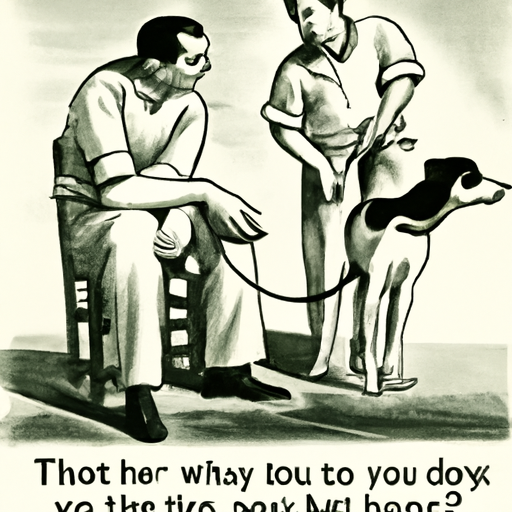Have you ever wondered why some dogs have short, stubby tails while others have long, flowing ones? The answer may surprise you. It’s not a matter of breed-specific trait or evolution, but a human-made intervention known as tail docking. This article aims to explore the reasons behind tail docking, its pros and cons, and delve into the ethical implications surrounding this practice.
Table of Contents
- Understanding Tail Docking
- The History of Tail Docking
- The Pros and Cons of Tail Docking
- Ethical Implications
- Frequently Asked Questions
Key Takeaways
- Tail docking is a practice that dates back centuries and was initially done for practical reasons.
- Today, tail docking is often performed for cosmetic purposes, and its necessity is a topic of heated debate.
- There are both potential benefits and risks associated with tail docking.
- The ethics of tail docking are contentious, with animal rights activists and many veterinarians opposing the practice.
Understanding Tail Docking
Tail docking, also known as tail cropping, refers to the act of shortening a dog’s tail. It is an elective procedure typically performed on puppies when they’re only a few days old, before their nerves have fully developed. This practice primarily happens without anesthesia and is usually performed by a veterinarian, breeder, or farmer.
Historically, tail docking served practical purposes, such as preventing injury, maintaining hygiene, and enhancing a dog’s working or hunting abilities. Today, however, many people clip dogs’ tails for largely aesthetic reasons, often to maintain a breed’s ‘traditional look’. For a more detailed look into the practice of tail docking, you can visit here.
The History of Tail Docking
Tail docking’s history dates back to ancient Rome. Romans believed that docking a dog’s tail could prevent rabies. In the 18th and 19th centuries, tail docking was performed to avoid taxes. In England, a tax was levied on dogs that were considered companions, but working dogs were tax-exempt. Hence, tail docking served as a visible sign that differentiated working dogs from companion dogs.
Even though these historical reasons are no longer valid today, tail docking continues in various parts of the world, including the United States. This practice is deeply ingrained in some breed standards. You can read more about the history of tail docking here.
The Pros and Cons of Tail Docking
Pros
- Prevents Tail Injuries: Some argue that tail docking can prevent tail injuries, especially in working dogs that might get their tails caught or trodden on.
- Maintains Breed Standards: Tail docking is often performed to maintain a certain breed’s ‘traditional look’.
- Hygiene: In some breeds, docking is believed to promote hygiene by preventing feces from sticking to the tail.
Cons
- Pain and Discomfort: Even though the procedure is performed at an early age, it can still cause pain and discomfort for the puppies.
- Potential Complications: Tail docking can lead to complications, including infection, bleeding, and necrosis.
- Behavioral Impact: The tail is an important tool for canine communication. Docking could potentially affect a dog’s ability to communicate with other dogs and with humans.
Ethical Implications
Tail docking is a hotly contested issue. Animal rights activists and many veterinarians argue that the practice is unnecessary and cruel. They believe that the cosmetic appeal to humans does not justify the potential pain and risk of complications for the dogs. On the other hand, breeders and some dog show enthusiasts argue that tail docking is an integral part of maintaining breed standards.
The ethical debate surrounding tail docking is complex and multifaceted. For a broader perspective, you might want to read this article on One Top Dog.
Frequently Asked Questions
1. Is tail docking illegal?
Tail docking legality varies by country and sometimes by breed. In the US, it is generally legal but is banned in some states for certain breeds.
2. Does tail docking hurt the puppy?
While puppies’ nervous systems are not fully developed when docking is usually performed, it’s believed they still experience some level of pain and discomfort.
3. Is tail docking necessary for all dog breeds?
No, tail docking is not medically necessary for any dog breed. Its practice is primarily for aesthetic reasons or to maintain breed standards.
4. Can a docked tail grow back?
No, once a dog’s tail has been docked, it will not grow back.
5. What alternatives are there to tail docking?
Alternatives include leaving the tail natural or performing a ‘tipping’ procedure that only removes the tail’s tip and is less invasive than full docking.
In conclusion, the practice of tail docking is a controversial issue with valid arguments on both sides. As a caregiver, it’s crucial to make informed decisions that prioritize your furry friend’s wellbeing. For more insights into dog health and wellness, check out these articles on One Top Dog, Dog Breeds, and Dog Training Tips.



